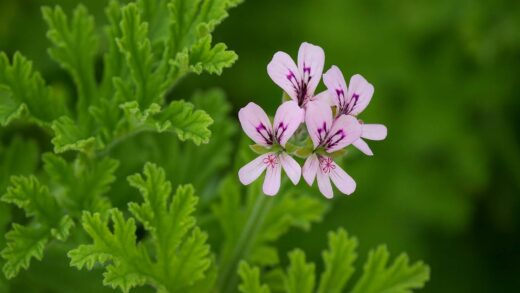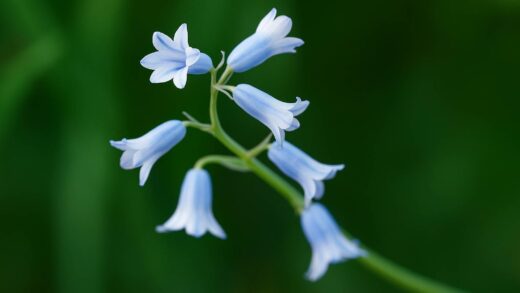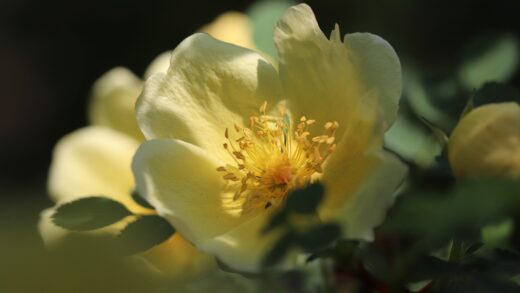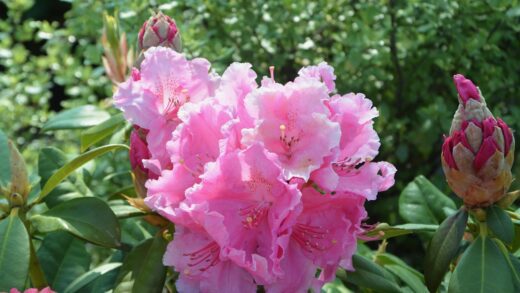Understanding the precise water requirements of the Banat peony is fundamental to its successful cultivation, as this plant has a distinct intolerance for excessive moisture around its root crown. Its evolutionary heritage in the well-drained, sandy loess soils of the Pannonian Basin has conditioned it to thrive in conditions where water is available but never stagnant. Therefore, the gardener’s approach to irrigation must be one of careful moderation, providing sufficient hydration to support vigorous growth and flowering while rigorously avoiding the waterlogged conditions that lead to fatal root rot. Mastering this balance is not just a matter of routine but a nuanced skill that responds to the changing seasons, soil type, and age of the plant.
The primary principle guiding the irrigation of this peony is to water deeply but infrequently. When you do water, the goal is to saturate the entire root zone, which can be 30-40 centimeters deep for an established plant. This encourages the roots to grow downwards in search of moisture, creating a more resilient and drought-tolerant plant. A light, shallow sprinkling of water is far more detrimental than helpful, as it only moistens the top layer of soil, encouraging shallow root growth and making the plant more susceptible to drying out during warm periods. It is far better to provide one thorough soaking every week or ten days during the growing season than to give a little bit of water every day.
Watering during the establishment phase
Newly planted Banat peonies have different and more critical water needs than their established counterparts. During their first full growing season, from spring through autumn, the focus is on developing a robust and extensive root system. Consistent moisture is essential to support this development. You should check the soil moisture every few days and provide a deep watering whenever the top 5-7 centimeters of soil feel dry to the touch. This consistent hydration helps the new roots expand into the surrounding soil and establish the plant firmly in its new home, setting the stage for future health and vigor.
It is particularly important to maintain this consistent moisture level during the first spring and summer. This is when the plant is actively growing foliage and, if you are lucky, may even attempt to produce a small flower. This growth requires a steady supply of water. However, the rule against waterlogged soil still applies with even greater force to new plants, whose limited root systems are especially vulnerable to rot. Ensure that the excellent drainage you prepared at planting time is functioning well, and never allow the plant to sit in standing water. The goal is to keep the soil evenly moist, like a wrung-out sponge, not saturated and muddy.
As autumn approaches in the first year, you can begin to gradually reduce the frequency of watering. This signals to the plant that it is time to slow down its growth and prepare for dormancy. Tapering off the water supply helps the plant to harden off properly before the first frosts. Allow the soil to dry out more completely between waterings, mimicking the natural reduction in rainfall that occurs in its native habitat. By the time the foliage begins to yellow and die back, you should cease all supplemental irrigation and let the natural autumn rains take over.
More articles on this topic
This attentive watering schedule during the first year is a critical investment in the long-term health of your Banat peony. A plant that is well-watered during its establishment phase will develop a deep and resilient root system that will enable it to withstand periods of drought much more effectively in subsequent years. It is a period of focused care that pays dividends for the entire life of the plant, which can be many decades. Taking the time to get the watering right in the beginning is one of the most important steps to ensuring a thriving specimen.
Irrigation during the growing and flowering season
The peak water demand for an established Banat peony occurs in the spring, a period of rapid and energy-intensive growth. From the moment the first shoots emerge until the plant has finished its spectacular flowering display, a consistent supply of moisture is crucial. During this time, the plant is producing a large mass of foliage and developing its magnificent blooms, processes that require significant water resources. A lack of water during this critical phase can result in smaller flowers, weaker stems, and a generally stressed plant. Aim to provide a deep soaking that moistens the soil to a depth of at least 30 centimeters whenever the top layer of soil becomes dry.
The specific frequency of watering will depend heavily on your local climate, weather patterns, and soil type. In a sandy, well-draining soil, you may need to water once every seven to ten days during a dry spring. In a heavier loam soil that retains more moisture, you might only need to water every two weeks. The best approach is not to adhere to a rigid schedule but to regularly monitor the soil moisture and the condition of the plant. A simple check with your finger or a trowel will tell you if the soil is dry a few inches down. The plant itself will also give you clues; slight wilting of the leaves during the heat of the day can be an indicator of thirst, though be sure it recovers in the cooler evening.
After the flowering period has concluded, typically by early summer, the plant’s water requirements begin to decrease significantly. The peony’s primary task for the rest of the season is to photosynthesize through its leaves, storing energy in its tuberous roots for the following year. While it still requires some moisture to sustain the foliage and prevent stress, its consumption rate drops off. You should reduce the frequency of your deep waterings, allowing the soil to dry out more thoroughly between each application. Often, normal summer rainfall will be sufficient to meet the plant’s needs without any supplemental irrigation at all.
More articles on this topic
It is crucial to avoid overwatering during the summer months. The combination of warm temperatures and constantly wet soil creates the perfect environment for the development of fungal diseases and root rot, which are the greatest threats to the Banat peony. Always err on the side of caution; this plant is far more likely to suffer from too much water than too little once it is established. A period of relative dryness during the summer mimics its natural habitat and is actually beneficial for the health of the plant, encouraging it to harden off and prepare for its winter dormancy.
Water management in summer and autumn
As the high heat of summer sets in, the focus of water management shifts from promoting growth to simply maintaining the health of the plant and preventing stress. An established Banat peony is remarkably drought-tolerant and can withstand typical summer dry spells without supplemental irrigation. The deep root system it developed in its early years is now able to access moisture from lower down in the soil profile. The primary role of the gardener during this time is observation. Monitor the plant during periods of extended drought, defined as several weeks without significant rainfall.
If the plant begins to show signs of severe stress, such as significant wilting that does not recover in the evening, or browning and crisping of the leaf margins, then a deep, thorough watering is warranted. This will help to rehydrate the plant and sustain the foliage, which is still vital for energy production. However, it is important to provide this water as a single, deep soaking rather than frequent, shallow applications. One good watering event every three to four weeks during a severe drought is usually more than enough to see an established plant through the toughest part of summer.
As summer transitions into autumn, the plant begins its natural process of senescence, and its water needs decline even further. The foliage will start to lose its deep green color, turning yellow or bronze as the plant reabsorbs nutrients and prepares for dormancy. During this period, you should cease all supplemental watering. The cooler temperatures and typically more frequent rainfall of autumn will provide all the moisture the plant requires. Continuing to water an already dormant or semi-dormant plant is a common mistake that can lead to waterlogged soil and root rot over the winter.
The final goal of autumn water management is to ensure the plant enters its winter dormancy in soil that is moist but not saturated. The roots should not be completely desiccated, but they absolutely must not be sitting in cold, wet mud. Allowing the soil to dry out naturally with the changing seasons is the best way to achieve this state. This careful reduction in watering is a critical step in preparing the peony for the cold months ahead, ensuring the roots are healthy and ready to burst forth with new growth when spring arrives.
The role of soil and mulch
The type of soil your Banat peony is planted in has a profound impact on its water requirements and your irrigation strategy. The ideal sandy, loamy soil provides the perfect balance of moisture retention and drainage. It holds enough water after a rain or irrigation event to be accessible to the plant’s roots, but it also allows excess water to drain away freely, preventing the dreaded waterlogged conditions. If you are gardening in heavy clay soil, you must be exceptionally cautious with watering, as the clay will hold onto moisture for much longer, and the risk of overwatering is significantly higher. Conversely, in very sandy soil, you will need to monitor moisture levels more frequently as the water will drain through very quickly.
Amending your soil with organic matter, such as well-rotted compost, is one of the most effective ways to improve its water-holding capacity and overall health. Organic matter acts like a sponge, absorbing water and releasing it slowly to the plant’s roots. In sandy soils, it helps to retain moisture that would otherwise be lost, and in clay soils, it helps to break up the dense particles, improving drainage and aeration. A healthy, organically rich soil requires less frequent watering and provides a more stable and forgiving environment for the peony’s root system.
The application of an organic mulch can also play a significant role in managing soil moisture. A 5-7 centimeter layer of mulch, such as shredded bark, straw, or chopped leaves, spread over the soil surface around the plant can dramatically reduce water evaporation. This keeps the soil cooler and more evenly moist, reducing the need for frequent irrigation, especially during the hot summer months. The mulch also helps to suppress weed growth, eliminating competition for water and nutrients.
When applying mulch, it is absolutely critical to keep it pulled back several inches from the base or crown of the peony. Piling mulch directly against the stems can trap moisture and heat, creating a perfect breeding ground for fungal diseases and crown rot. The mulch should form a donut shape around the plant, not a volcano against it. This simple precaution allows for good air circulation around the sensitive crown while still providing all the moisture-conserving benefits of mulching for the surrounding root zone.


















